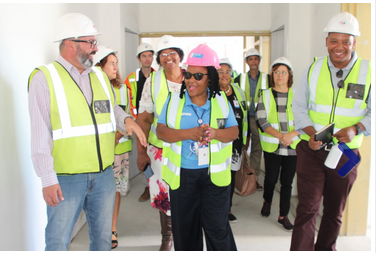Eskom tariff increase could cost us R1bn – Sibanye

20-11-2017
Read : 76 times
Moneyweb
Source
‘Three shafts could close, 8 683 jobs lost.’
An electricity tariff increase of 19.9% could add R1 billion to precious metal producer Sibanye Stillwater’s annual electricity bill and result in the closure of three more shafts, according to its senior vice president Peter Turner.
Turner on Thursday told the national energy regulator Nersa that 8 683 direct and 1 770 indirect jobs could be on the line.
Turner made a presentation at Nersa’s public hearing about Eskom’s application for an average 19.9% tariff increase that is set to take effect on April 1 next year for Eskom’s direct customers and July 1 for customers supplied by municipalities.
If Eskom’s application is granted, bulk tariffs to municipalities would increase by 27.3%.
Read: Eskom top management due for lifestyle audits – Maritz
Turner told Nersa that Sibanye warned repeatedly in the past that Eskom tariff increases would result in job losses. It made presentations in 2013, 2015 and again last year, Turner said.
As predicted, increased electricity costs contributed to the closure of four shafts that were put into care and maintenance. As a result 8 702 direct jobs were lost.
Sibanye is one of the top five precious metal producers in the world and one of the five largest private electricity users in South Africa. It uses an average of 665MW of electricity per annum, which is 2.9% of Eskom’s demand, Turner said, and almost 20% of Sibanye’s operating cost.
Any increase in electricity cost impacts on the profitability and sustainability of Sibanye’s operations, Turner said.
Over the last five years the group’s electricity consumption grew due to operational expansions. Nevertheless the group achieved 100MW efficiency gains.
Electricity tariffs however grew at a compound annual growth rate of 17% over the last ten years, Turner said.
Despite demand reductions, Sibanye’s electricity cost has been growing exponentially and will amount to about R5 billion this year, Turner said.
An increase of 19.9% would add another R1 billion to the group’s electricity bill.
In 2007, electricity cost was 9% of total operational cost. This has grown to 19% last year and contributed to the closure of four shafts in the last four years, Turner said.
The group cannot mitigate a 19.9% tariff increase by improving productivity, he said. It will threaten the sustainability of operations and result directly in the closure of three shafts.
The closure of the three shafts will result in production losses of 6 212 kg per annum, which represents R3.3 billion in revenue.
Eskom itself would suffer as 55MW of electricity demand will be gone, representing R367 million annual revenue for the power utility, Turner said. The R479 million Sibanye pays to suppliers in relation to the three shafts will be lost together with a further 8 683 direct and 1 770 indirect jobs.
The potential loss in tax and royalties for the fiscus amounts to R1.6 billion, Turner said.
He recommended that Eskom embark on “aggressive cost cutting” and enter into negotiated pricing agreements with intensive users for the next two years in an effort to increase sales.
He said large users should be consulted by Eskom to ensure accurate sales forecasts and their tariffs should remain unchanged for the next year or two. Thereafter Eskom should provide them with a long-term price path to enable long-term planning.
Turner recommended that the three Eskom applications to claw back costs incurred in previous years through further tariff increases, be waived. Nersa has received the applications, but has not yet considered them.
He said in the long term Eskom should be restructured into three business, one each for generation, transmission and distribution with an independent system operator and buyer, to foster competition.
Lastly he said competition should be facilitated through the participation of independent power producers and sale of Eskom power stations to private operators.
Recent News
Here are recent news articles from the Building and Construction Industry.
Have you signed up for your free copy yet?









